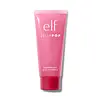What's inside
What's inside
 Key Ingredients
Key Ingredients

No key ingredients
 Benefits
Benefits

 Concerns
Concerns

 Ingredients Side-by-side
Ingredients Side-by-side

Water
Skin ConditioningPEG-7 Glyceryl Cocoate
EmulsifyingPropanediol
SolventGlycerin
HumectantAcrylamide/Sodium Acryloyldimethyltaurate Copolymer
Emulsion StabilisingAllantoin
Skin ConditioningAmmonium Polyacryloyldimethyl Taurate
Emulsion StabilisingBetaine
HumectantC12-15 Alkyl Benzoate
AntimicrobialGlycolipids
Skin ConditioningIsohexadecane
EmollientPanthenol
Skin ConditioningPolylysine
Polysorbate 80
EmulsifyingPotassium Sorbate
PreservativeSorbitan Oleate
EmulsifyingCaprylyl Glycol
EmollientHexylene Glycol
EmulsifyingPhenoxyethanol
PreservativeWater, PEG-7 Glyceryl Cocoate, Propanediol, Glycerin, Acrylamide/Sodium Acryloyldimethyltaurate Copolymer, Allantoin, Ammonium Polyacryloyldimethyl Taurate, Betaine, C12-15 Alkyl Benzoate, Glycolipids, Isohexadecane, Panthenol, Polylysine, Polysorbate 80, Potassium Sorbate, Sorbitan Oleate, Caprylyl Glycol, Hexylene Glycol, Phenoxyethanol
Water
Skin ConditioningPEG-7 Glyceryl Cocoate
EmulsifyingDipropylene Glycol
HumectantPoloxamer 184
EmulsifyingSodium Acrylate/Sodium Acryloyldimethyl Taurate Copolymer
Emulsion StabilisingBetaine
HumectantCitrullus Lanatus Fruit Extract
Skin ConditioningPanthenol
Skin ConditioningXylitylglucoside
HumectantAnhydroxylitol
HumectantXylitol
HumectantAllantoin
Skin ConditioningButylene Glycol
Humectant1,2-Hexanediol
Skin ConditioningIsohexadecane
EmollientIsopropyl Myristate
EmollientPolysorbate 80
EmulsifyingHydroxyacetophenone
AntioxidantPhenoxyethanol
PreservativeParfum
MaskingCI 16035
Cosmetic ColorantWater, PEG-7 Glyceryl Cocoate, Dipropylene Glycol, Poloxamer 184, Sodium Acrylate/Sodium Acryloyldimethyl Taurate Copolymer, Betaine, Citrullus Lanatus Fruit Extract, Panthenol, Xylitylglucoside, Anhydroxylitol, Xylitol, Allantoin, Butylene Glycol, 1,2-Hexanediol, Isohexadecane, Isopropyl Myristate, Polysorbate 80, Hydroxyacetophenone, Phenoxyethanol, Parfum, CI 16035
Ingredients Explained
These ingredients are found in both products.
Ingredients higher up in an ingredient list are typically present in a larger amount.
Allantoin is a soothing ingredient known for its protective and moisturizingg properties. Because of this, it is often added to products with strong active ingredients.
Studies show higher concentrations of this ingredient can promote wound healing.
Though it can be derived from the comfrey plant, allantoin is produced synthetically for cosmetic products to ensure purity.
Learn more about AllantoinBetaine is a common humectant (a substance that promotes retention of moisture). It's known to be gentle on the skin and can help balance hydration.
This ingredient is best for improving hydration and soothing irritated skin. Studies also show it helps even out skin tone.
Fun fact: Betaine is naturally created in the skin and body. The kind found within cosmetic products can be either plant-derived or synthetic.
Another name for betaine is trimethylglycine.
Learn more about BetaineIsohexadecane is added to enhance texture, emulsify, and to help cleanse. It is an isoparrafin. It is a component of petrolatum.
Due to its large size, Isohexadecane is not absorbed by the skin. Instead, it sits on top and acts as an emollient. Emollients help keep your skin soft and smooth by trapping moisture within.
Isohexadecane is often used in products designed to help oily skin. It is lightweight and non-greasy while helping to moisturize. When mixed with silicones, it gives a product a silky feel.
Learn more about IsohexadecanePanthenol is a common ingredient that helps hydrate and soothe the skin. It is found naturally in our skin and hair.
There are two forms of panthenol: D and L.
D-panthenol is also known as dexpanthenol. Most cosmetics use dexpanthenol or a mixture of D and L-panthenol.
Panthenol is famous due to its ability to go deeper into the skin's layers. Using this ingredient has numerous pros (and no cons):
Like hyaluronic acid, panthenol is a humectant. Humectants are able to bind and hold large amounts of water to keep skin hydrated.
This ingredient works well for wound healing. It works by increasing tissue in the wound and helps close open wounds.
Once oxidized, panthenol converts to pantothenic acid. Panthothenic acid is found in all living cells.
This ingredient is also referred to as pro-vitamin B5.
Learn more about PanthenolPeg-7 Glyceryl Cocoate is created from polyethylene glycol and fatty acids from coconut oil.
It is a synthetic polymer with emulsifying and cleansing properties.
As an emulsifier, Peg-7 Glyceryl Cocoate prevents ingredients such as oils and water from separating. It also helps rinse away oils, dirt, and pollutants from skin.
Peg-7 Glyceryl Cocoate may not be fungal acne safe. It can also dry out skin.
Learn more about PEG-7 Glyceryl CocoatePhenoxyethanol is a preservative that has germicide, antimicrobial, and aromatic properties. Studies show that phenoxyethanol can prevent microbial growth. By itself, it has a scent that is similar to that of a rose.
It's often used in formulations along with Caprylyl Glycol to preserve the shelf life of products.
Polysorbate 80 is a surfactant and emulsifier. It is used to keep ingredients together, and prevent oils and waters from separating.
It is made from polyethoxylated sorbitan and oleic acid. This ingredient can be found in cosmetics, foods, and medicine. It is water-soluble.
Polysorbate 80 may not be fungal acne safe.
Learn more about Polysorbate 80Water. It's the most common cosmetic ingredient of all. You'll usually see it at the top of ingredient lists, meaning that it makes up the largest part of the product.
So why is it so popular? Water most often acts as a solvent - this means that it helps dissolve other ingredients into the formulation.
You'll also recognize water as that liquid we all need to stay alive. If you see this, drink a glass of water. Stay hydrated!
Learn more about Water